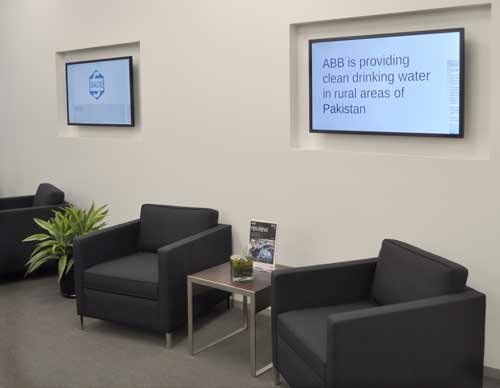
Why Is AV Always One Of The Last Items To Be Considered In New Construction
Why is AV an afterthought when it comes to new construction?
There are a few reasons why A/V is one of the last items to be considered in new construction. For one, though A/V and IT are now blending together, there is still a perception that the two exist in their own silos. As such, there may not be anyone with the company who advocates for A/V prior to building construction. Further, many businesses only realize the potential of A/V after it’s too late to plan and build out the system with the rest of the construction teams. By the time these companies consider A/V, it’s usually well past the initial phases of the facility’s construction. In many cases, the building is already erected and operating before the first A/V technologies are brought in. There are likely some other causes behind the delay to integrate A/V into a project, but they tend to boil down to this one point – many companies underestimate the amount of work that goes into A/V system planning and setup. That’s a problem because a system’s effectiveness depends on how well it is planned out and integrated into the building. The sooner A/V solutions are accounted for during a building’s design and construction, the more effective that solution is likely to be.Why should companies make A/V a part of new construction?
There are a variety of complications that can arise when A/V is adopted during or after construction. A skilled A/V integrator can account for and navigate around many of these, but even the most skilled integrators will be more effective if they are given time upfront. That means bringing the integrator in before the building’s drawings are even submitted. Here’s why it’s important to operate on this timeline:1. Reworking the building’s drawings is expensive and time consuming – Prior to beginning construction, every team involved in the project will have to submit drawings so that their work can be accounted for. This is essential because it gets everyone on the same page and ensures no changes need to be made once the building is under construction.
If an A/V integrator is brought in after this process is complete, they will have no time to submit their own drawings to the construction team. The A/V integrator then has to make renovations to the new construction to accommodate the system equipment, which takes more time.
2. A/V integrators require a controlled environment to do their job – New construction is a messy, dusty job, and if there’s one thing A/V technology doesn’t get along with, it’s dust. If an integrator is forced to work around uncontrolled dust and debris, the system equipment may be adversely affected. The project manager will need to establish a controlled work area for the integrator to operate in to prevent this.
Waiting until after construction begins will make it difficult for the project manager to provide such an environment. This can delay the integrator and put the A/V side of the project behind schedule.
3. Entire rooms may have to be reworked to accommodate A/V technology – Sometimes, integrators are left with a space that’s nearly impossible to work with. Sure, they can still set up an A/V solution and promise effective communication, but the equipment may not be properly integrated into the space. This can lead to user frustration when operating the system or even impact how the space is used.
A/V integrators would prefer to avoid these issues before they arise, and that means laying out the building’s rooms with A/V in mind. For instance, if the room in question is a classroom or a lecture hall, then a large digital display will likely be a part of most A/V solutions. But what if the space for this display is not accounted for before the room is finished? The display may have to go in a spot that is less effective, a smaller display may be required, or the display may have to be mounted on a cart or other surface. These alternatives may be more expensive or less effective, depending on their intended use. However, if the integrator is allowed a say on how the rooms are laid out, they can make the most out of the system design.
This goes even deeper, though, because a lot of the work that goes into every room is handled by expert technicians like electricians. These technicians often work independently and aren’t going to consider A/V if they haven’t been told to. If an A/V integrator is brought in after an electrician or other technician has done their job, they may have to come back and redo their work.
What should companies do to avoid the above problems? Consider A/V along with all other aspects of the construction project. The integrator should be part of the project’s planning and should have room to submit adjustments and establish their work area prior to and during construction. The sooner an integrator is included on the project, the better the results will be.

